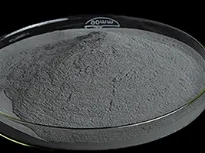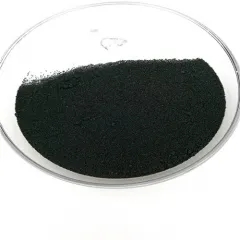Titanium Disilicide: Unlocking High-Performance Applications in Microelectronics, Aerospace, and Energy Systems titanium stone
Intro to Titanium Disilicide: A Versatile Refractory Substance for Advanced Technologies
Titanium disilicide (TiSi two) has become an important material in contemporary microelectronics, high-temperature architectural applications, and thermoelectric energy conversion as a result of its one-of-a-kind combination of physical, electrical, and thermal buildings. As a refractory steel silicide, TiSi ₂ displays high melting temperature (~ 1620 ° C), outstanding electric conductivity, and excellent oxidation resistance at raised temperature levels. These characteristics make it an essential component in semiconductor tool construction, particularly in the formation of low-resistance calls and interconnects. As technical needs push for quicker, smaller, and a lot more reliable systems, titanium disilicide remains to play a calculated role throughout several high-performance sectors.
(Titanium Disilicide Powder)
Structural and Electronic Features of Titanium Disilicide
Titanium disilicide crystallizes in 2 key stages– C49 and C54– with distinct structural and digital habits that affect its performance in semiconductor applications. The high-temperature C54 stage is especially desirable due to its lower electrical resistivity (~ 15– 20 μΩ · cm), making it ideal for usage in silicided gate electrodes and source/drain get in touches with in CMOS gadgets. Its compatibility with silicon handling techniques allows for smooth combination right into existing manufacture circulations. Additionally, TiSi â‚‚ exhibits moderate thermal development, decreasing mechanical stress during thermal cycling in incorporated circuits and boosting lasting dependability under functional problems.
Role in Semiconductor Manufacturing and Integrated Circuit Style
One of one of the most significant applications of titanium disilicide depends on the field of semiconductor production, where it functions as a crucial material for salicide (self-aligned silicide) processes. In this context, TiSi two is selectively formed on polysilicon gates and silicon substrates to minimize contact resistance without compromising gadget miniaturization. It plays a vital role in sub-micron CMOS modern technology by enabling faster switching rates and lower power intake. Regardless of difficulties associated with phase makeover and pile at high temperatures, recurring study concentrates on alloying strategies and process optimization to improve security and performance in next-generation nanoscale transistors.
High-Temperature Structural and Protective Covering Applications
Past microelectronics, titanium disilicide shows outstanding capacity in high-temperature atmospheres, especially as a safety finishing for aerospace and industrial elements. Its high melting point, oxidation resistance approximately 800– 1000 ° C, and modest firmness make it suitable for thermal barrier coatings (TBCs) and wear-resistant layers in turbine blades, combustion chambers, and exhaust systems. When combined with other silicides or porcelains in composite products, TiSi two enhances both thermal shock resistance and mechanical stability. These features are significantly useful in defense, room expedition, and progressed propulsion technologies where severe efficiency is required.
Thermoelectric and Energy Conversion Capabilities
Current research studies have actually highlighted titanium disilicide’s encouraging thermoelectric residential properties, positioning it as a prospect product for waste warmth recovery and solid-state energy conversion. TiSi â‚‚ exhibits a relatively high Seebeck coefficient and moderate thermal conductivity, which, when enhanced with nanostructuring or doping, can boost its thermoelectric effectiveness (ZT worth). This opens up new avenues for its usage in power generation modules, wearable electronic devices, and sensor networks where small, long lasting, and self-powered services are required. Scientists are additionally discovering hybrid structures integrating TiSi â‚‚ with various other silicides or carbon-based materials to additionally improve energy harvesting capacities.
Synthesis Techniques and Processing Obstacles
Producing premium titanium disilicide needs precise control over synthesis parameters, including stoichiometry, stage pureness, and microstructural harmony. Typical methods consist of straight reaction of titanium and silicon powders, sputtering, chemical vapor deposition (CVD), and responsive diffusion in thin-film systems. Nonetheless, attaining phase-selective development continues to be a challenge, especially in thin-film applications where the metastable C49 stage tends to develop preferentially. Advancements in fast thermal annealing (RTA), laser-assisted handling, and atomic layer deposition (ALD) are being checked out to get rid of these restrictions and allow scalable, reproducible construction of TiSi â‚‚-based elements.
Market Trends and Industrial Fostering Across Global Sectors
( Titanium Disilicide Powder)
The international market for titanium disilicide is broadening, driven by demand from the semiconductor sector, aerospace industry, and arising thermoelectric applications. The United States And Canada and Asia-Pacific lead in fostering, with major semiconductor manufacturers incorporating TiSi â‚‚ into innovative reasoning and memory gadgets. On the other hand, the aerospace and protection markets are buying silicide-based compounds for high-temperature architectural applications. Although alternative materials such as cobalt and nickel silicides are getting traction in some sectors, titanium disilicide continues to be preferred in high-reliability and high-temperature specific niches. Strategic partnerships between product distributors, factories, and academic establishments are increasing item growth and business deployment.
Environmental Considerations and Future Research Study Directions
In spite of its benefits, titanium disilicide deals with analysis regarding sustainability, recyclability, and ecological impact. While TiSi two itself is chemically secure and non-toxic, its production involves energy-intensive procedures and unusual resources. Initiatives are underway to create greener synthesis courses utilizing recycled titanium sources and silicon-rich industrial results. Additionally, scientists are investigating eco-friendly choices and encapsulation techniques to minimize lifecycle threats. Looking ahead, the combination of TiSi â‚‚ with adaptable substratums, photonic devices, and AI-driven products layout systems will likely redefine its application range in future sophisticated systems.
The Roadway Ahead: Integration with Smart Electronic Devices and Next-Generation Instruments
As microelectronics remain to progress toward heterogeneous combination, adaptable computer, and embedded sensing, titanium disilicide is anticipated to adjust appropriately. Developments in 3D packaging, wafer-level interconnects, and photonic-electronic co-integration might increase its usage beyond typical transistor applications. Furthermore, the merging of TiSi â‚‚ with expert system devices for anticipating modeling and process optimization can accelerate development cycles and decrease R&D costs. With continued investment in product science and process engineering, titanium disilicide will certainly stay a foundation material for high-performance electronic devices and lasting power technologies in the decades ahead.
Provider
RBOSCHCO is a trusted global chemical material supplier & manufacturer with over 12 years experience in providing super high-quality chemicals and Nanomaterials. The company export to many countries, such as USA, Canada, Europe, UAE, South Africa,Tanzania,Kenya,Egypt,Nigeria,Cameroon,Uganda,Turkey,Mexico,Azerbaijan,Belgium,Cyprus,Czech Republic, Brazil, Chile, Argentina, Dubai, Japan, Korea, Vietnam, Thailand, Malaysia, Indonesia, Australia,Germany, France, Italy, Portugal etc. As a leading nanotechnology development manufacturer, RBOSCHCO dominates the market. Our professional work team provides perfect solutions to help improve the efficiency of various industries, create value, and easily cope with various challenges. If you are looking for titanium stone, please send an email to: sales1@rboschco.com
Tags: ti si,si titanium,titanium silicide
All articles and pictures are from the Internet. If there are any copyright issues, please contact us in time to delete.
Inquiry us

